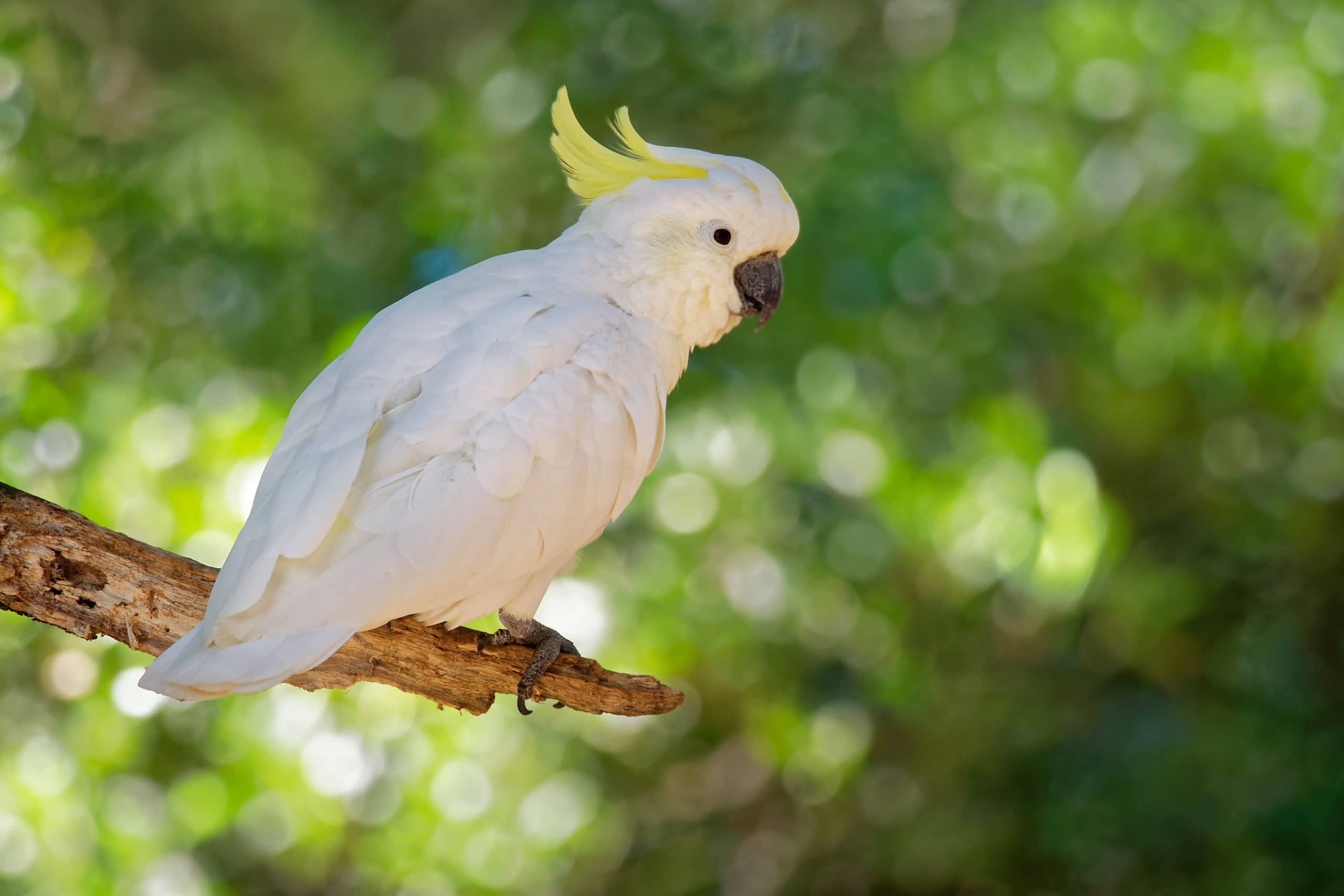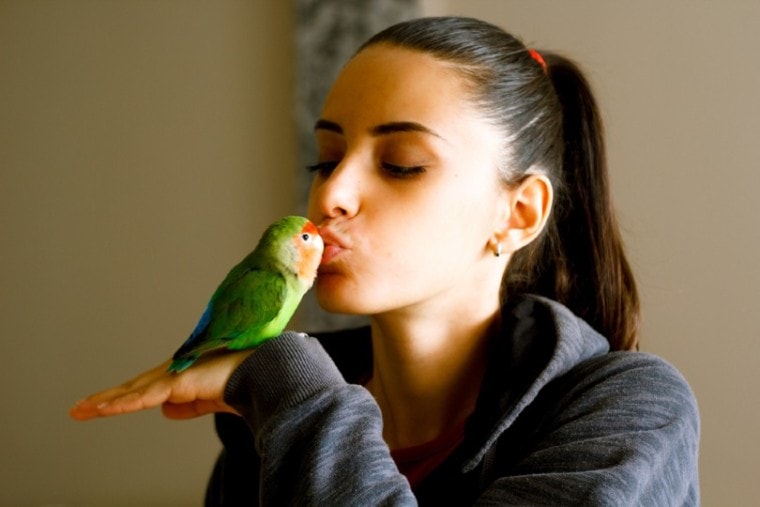
Despite birds being one of the most popular pets, the general population doesn’t know much about proper avian husbandry. Caring for birds is much different from caring for other domesticated animals, so all prospective bird owners must take the time to educate themselves well before signing the adoption papers. Failure to do so can lead to severe illness or even premature death.
If you’re considering adopting a bird for the first time, you’ve come to the right place. Read on for 12 tips and tricks first-time bird owners need to know before bringing their new pet home.
The 12 Tips to Take Care of a Pet Bird
1. Get the Right Cage
Make sure that the cage is a home and not a prison. Keeping a proper environment for your new bird is essential, as they will likely spend a fair amount of time in their cage. It must be appropriately sized for your bird’s species and the number of birds you’re keeping. Generally speaking, the larger the cage you can afford and fit into your home, the better.
A good rule of thumb is that the cage’s width should be, at minimum, twice your bird’s wingspan. Of course, the more birds you keep, the larger the cage needs to be. An aviary would be much more appropriate if you plan on owning many birds at a time.
You must also look at the cage’s bars and how they’re spaced. They shouldn’t be too far apart that your bird’s head could get caught between them or too close that their feet can get caught on them.
Round cages are generally frowned upon in the bird community because they don’t provide corners where your bird can retreat to feel safe. Circle cages also reduce the space available for the bird, so choose a rectangular option instead.
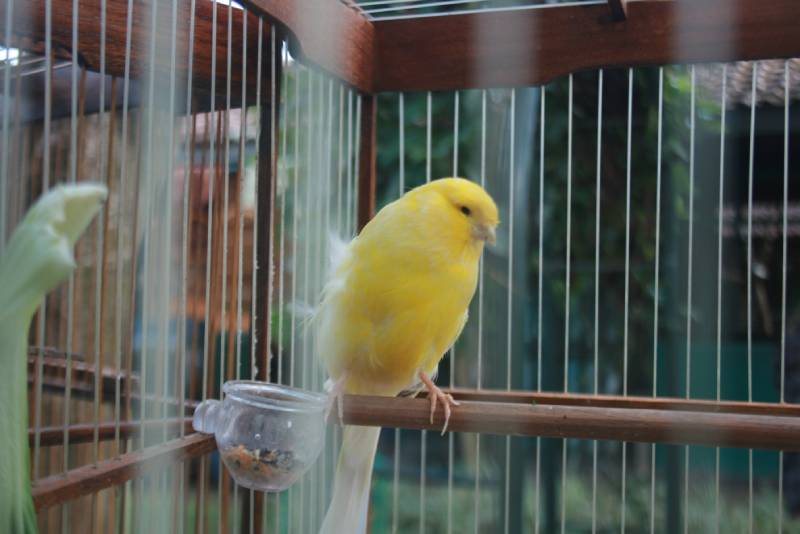
2. Put the Cage in the Right Room
Your bird’s cage must be kept in a warm, comfortable room with a stable temperature. The cage must have access to natural light but have shade, and it should be placed in a well-ventilated area.
Birds are social creatures, so they shouldn’t be isolated in a room separate from all the action. That said, your bird’s personality can play a part in the room you choose to house them in. For example, a social bird that loves being the center of attention will prefer a space that humans frequent, while one with a nervous personality might prefer somewhere quieter with less traffic.
Don’t put the cage too close to a window, as outside factors like dogs, storms, and other birds can spook them. Being too close to a window can also cause temperature shifts, making your pet uncomfortable. The best place for the cage is in a corner, so your bird will have two walls and not feel like they’re always having to be on a 360-degree lookout for predators.
We do not recommend putting your cage in the kitchen or bathroom because temperature shifts and chemicals can harm birds.
3. Find an Avian Vet
Birds are exotic animals that not every veterinarian is qualified to treat. Ensure that you have an avian vet in your area before adopting a bird. You should also have your new pet examined before bringing them home, especially if you have other pets. The last thing you want to do is bring a pet with a contagious condition into your home. Discuss with your vet about proper quarantine procedures before welcoming your bird in your household.
You should also know that veterinary care for exotic pets tends to be pricier than other common pets like cats or dogs.
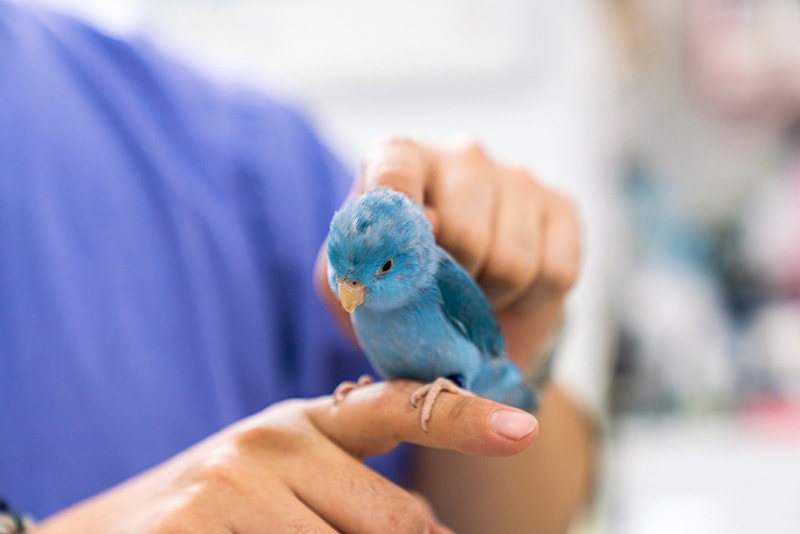
4. Educate Yourself on Avian Nutrition
A balanced diet is as important for birds as any other living creature. Domesticated birds, just like their wild counterparts, cannot thrive on a seed diet only. While you might put seeds in your bird feeders for backyard birds, those are not the only things that they’ll eat. A seed-only diet can be detrimental to a bird’s health because it does not provide all the nutrients your pet will need to thrive. You can occasionally offer seeds as treats, but your bird should get most of their nutrients from a diet that’s a mix of various vegetables and fruits with high-quality pellet food.
Please note that certain foods can be toxic for birds. Foods that you should never feed your feathered pal include:
You might also consider investing in a cuttlebone for your bird’s cage. Cuttlebones are the inner shell of a cuttlefish that acts as an important dietary supplement for birds as it provides a great source of minerals and calcium. Cuttlebone can be hung in your bird’s cage and act as a toy and natural beak trimmer.
5. Let Them Fly
Giving your bird time outside their cage is essential for keeping them happy and healthy. They are not designed to be cooped up in cages all day, so try to let them out as often as possible. If you can, convert a room in your home into a bird-safe space so your pet can fly to their heart’s content.
We recommend always supervising your bird when they are outside of the cage. If you don’t have the free time to watch your pet constantly, you might consider investing in a flight cage to give them plenty of space to roam while staying safe inside an enclosure.
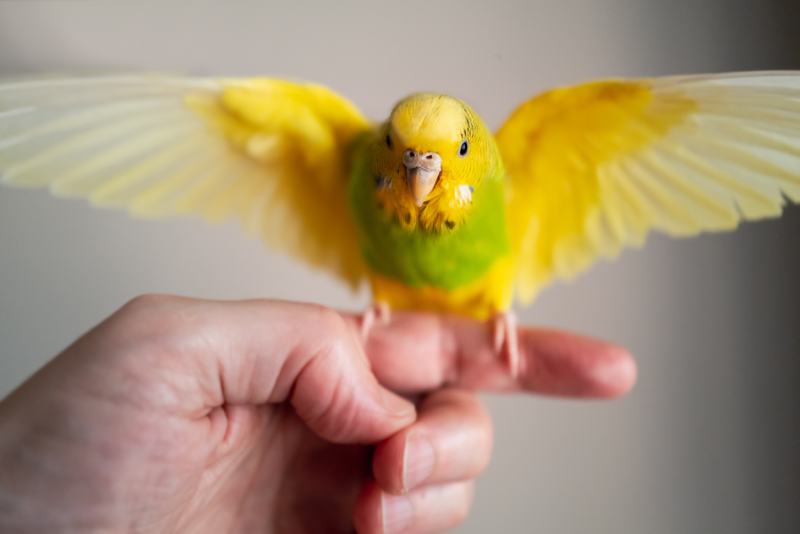
6. Buy a Variety of Toys
Like other domesticated animals, birds need toys in their environment for mental and physical stimulation. The type of toys you buy will depend on your bird’s species, but there are several types you should consider.
Foraging toys require your bird to solve a problem: how to get the treat you’ve hidden in the toy. This can include puzzles like untying knots or opening compartments.
Chewable toys are made of bird-safe materials and are designed to be destroyed. These toys are fun for your pet and give them a sense of accomplishment and a job well done once the toy is ruined.
Exercise toys are exactly what they sound like—toys designed to stimulate exercise for different parts of your bird’s body. This can include things such as swings and bungees.
Foot toys are small toys that your bird can hold with their feet. This is great for promoting good foot dexterity.
The more toys you have, the better, but don’t put them all in the cage at the same time. Your bird will grow bored of the toys after a few days, so switch them out weekly.
7. Get a Variety of Perches
When your bird isn’t flying, they are standing. That’s why having various perches in your pet’s cage is important, as they will almost always be using one. Birds use perches for standing, sleeping, climbing, cleaning, and chewing. Make sure they have a good grip.
Perches come in various materials (e.g., wood, rope, ceramic, cement, etc.) and sizes, so invest in a few different kinds to give your bird’s feet a variety of grips. Birds can develop sores on their feet if the perches are all the same in diameter, as they always put pressure on the same areas.
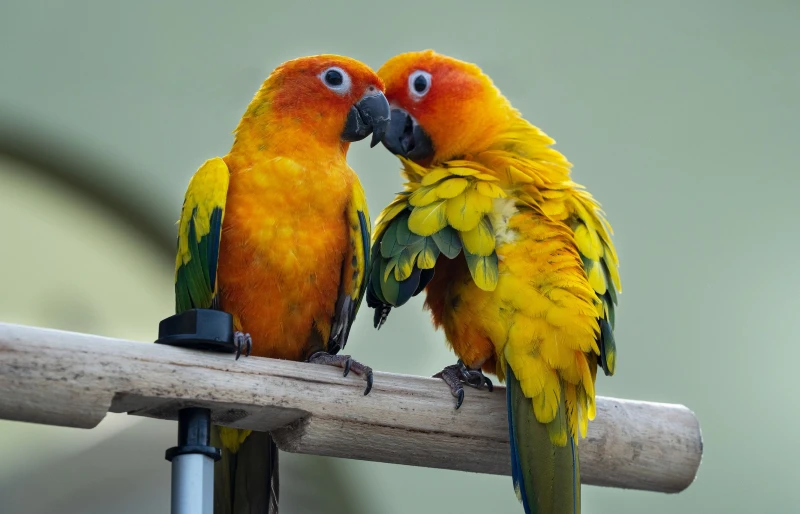
8. Spend Time Together
Companionship is essential to most bird species’ well-being, so setting aside time daily to spend with your pet is important. Many birds will roost, fly, and forage together in flocks in the wild. While your domesticated bird may not have a feathered flock to call their own, you will be considered a social element, so your bird will want to be part of the activities that you’re doing around the house. Many crave socialization and will become lonely and unhealthy if left to their own devices all day. The more you handle your bird, the more likely they will bond deeply with you.
In addition, birds are highly intelligent creatures, and many can be trained for obedience. Training is a fantastic, productive way to bond with your pet. It doesn’t come without patience and hard work, but it’ll benefit you and your pet.
Some bird species, like cockatiels and parrots, can mimic speech and the sounds they hear. So, the more you talk with your pet, the more likely they’ll learn words and phrases.
9. Provide Bath Water
Birds can handle their own grooming needs, but they need you to provide them with a place to bathe themselves. If the water dish in the cage is big enough, your pet probably won’t think twice about jumping into the dish for a good bath. If the dish isn’t big enough, you can bring your pet to the sink to see if they would like to bathe there.
Some birds love being in the shower with their owners. We recommend a good shower perch if this is the case for your pet. It sticks to the wall of your shower with suction cups and gives your pet a safe place to perch while enjoying the water.
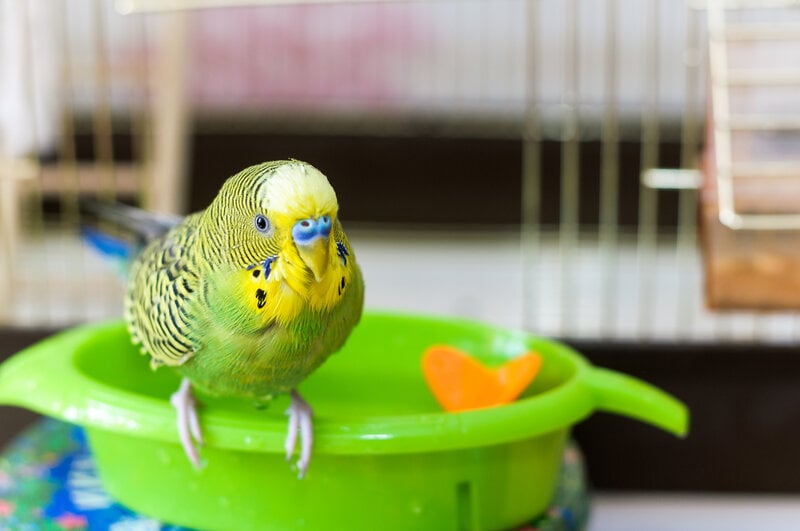
10. Bird-Proof Your Space
While cats and dogs typically have free reign of their homes, the same can’t be said for birds. Many household hazards could severely injure or even kill your avian pets, so it’s important to bird-proof your space before bringing one home.
Consider the following when letting your bird out to free fly:
Another important aspect of birdproofing includes removing objects in your home that could be hazardous.
Birds have very sensitive respiratory systems, so any scented products, like candles, wax melts, air fresheners, and perfumes, should not be used. This also includes cigarette smoke and household cleaners.
11. Replace Your Pots and Pans
Non-stick products in your home containing Teflon or other PFAS chemicals can kill your bird.
Polytetrafluoroethylene (PTFE) is in many household objects but is commonly used as a non-stick coating on cookware. Teflon is the most easily recognizable brand name of the PTFE coatings. Other objects in your home that may contain PTFE include waffle irons, air fryers, clothing irons, hair straighteners, ironing board covers, etc. When the coating is heated to over 530℉, it will release particles and gases that can become toxic when inhaled. The gases are odorless and colorless, so you could unintentionally release them and not even know it.
Most instances of PTFE poisoning in birds occur when a pan has been overheated or burned, though cases have been reported when PTFE-containing items were heated to recommended temperatures.
It’s better to err on the side of caution and donate your Teflon-containing pans. Instead, look for ones that explicitly state that they are PTFE, PFOA, and PFOS free. The best bird-safe cookware is made with cast iron, glass, or stainless steel.
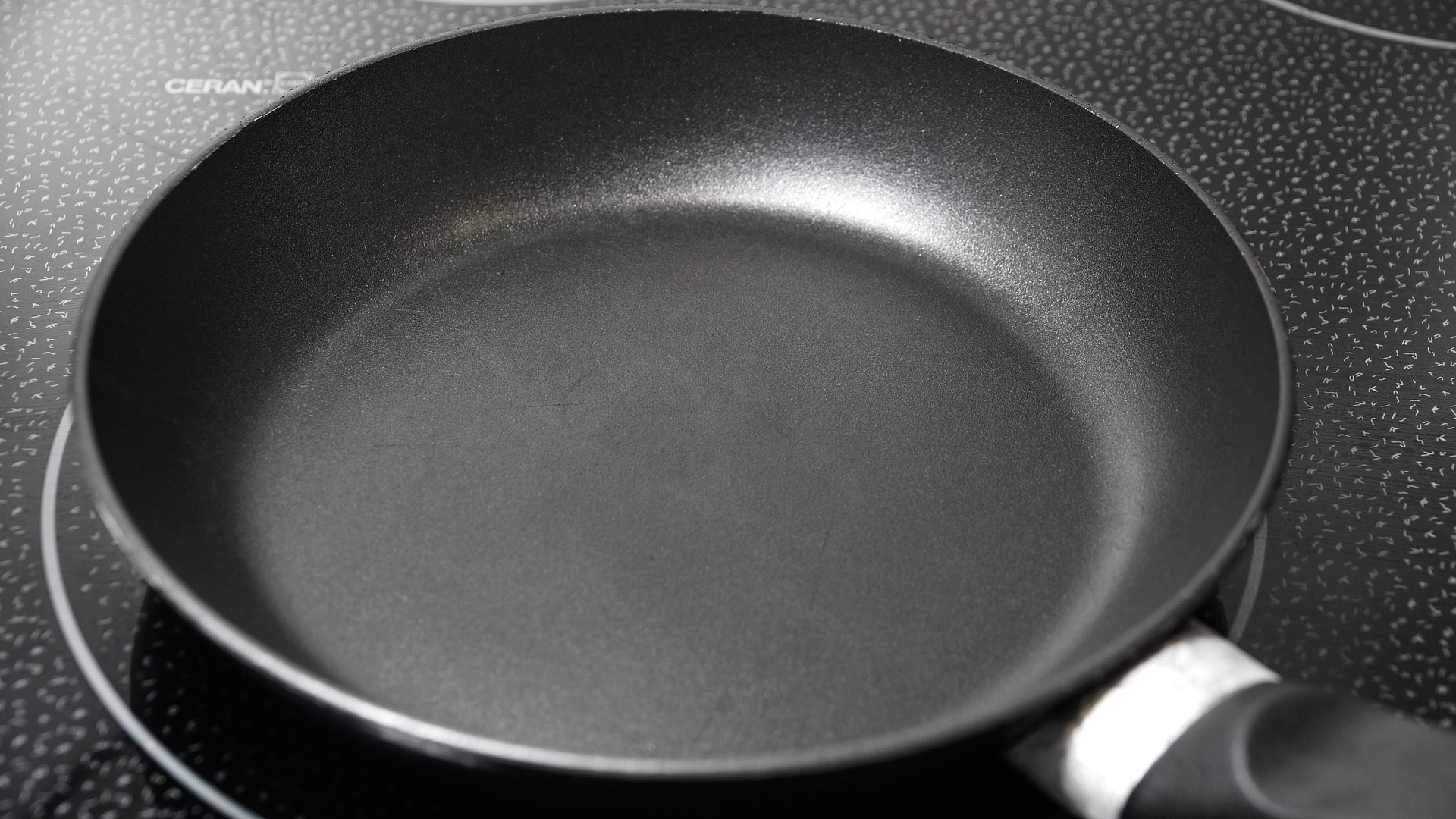
12. Clean the Cage Daily
Cleaning the cage daily is a reality for every bird owner. A clean cage reduces the risk of bacteria, fungi, or viral infections and is essential for maintaining good bird health.
Change the cage liner/bedding every day. This will keep things bacteria-free and give you an easier way to track your bird’s health. You can tell a lot about a bird by their feces, so keeping tabs on your pet’s poop is vital.
Clean the cage using non-toxic cleaning supplies, such as white distilled vinegar and hot water. You can also use steam to clean play gyms or porous perches.
Remove uneaten food an hour or two after putting it in the cage to prevent bacterial growth. According to the USDA, bacteria can start doubling in numbers in as few as 20 minutes.
Final Thoughts
With their specialized level of care, your first bird can feel extremely overwhelming. But once you get the hang of things, you’ll have a buddy that will be with you for many years. Take time doing your research to find the perfect species for your lifestyle, and familiarize yourself with that bird’s care needs well before signing the adoption papers.
Featured Image Credit: Dusan Stevic, Shutterstock




